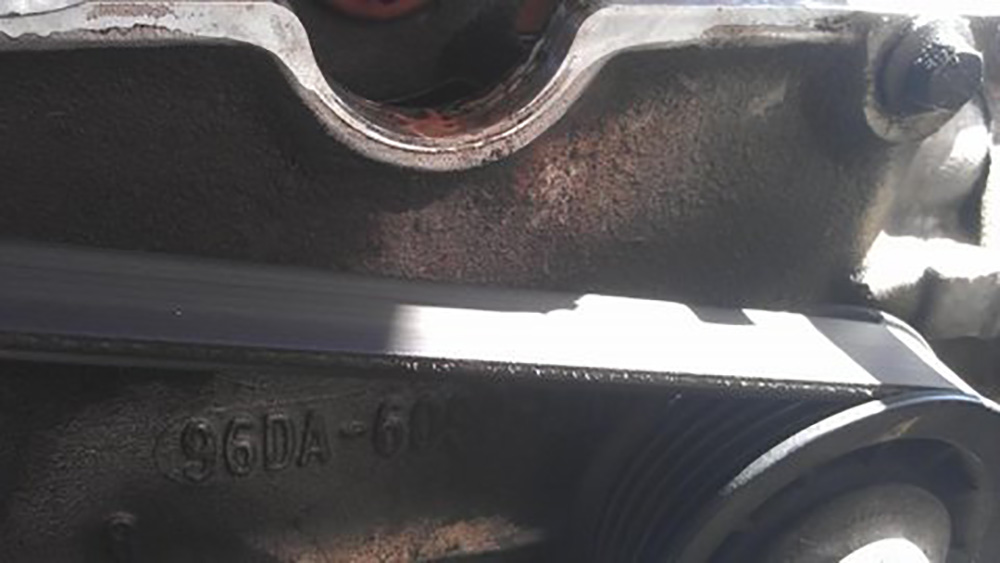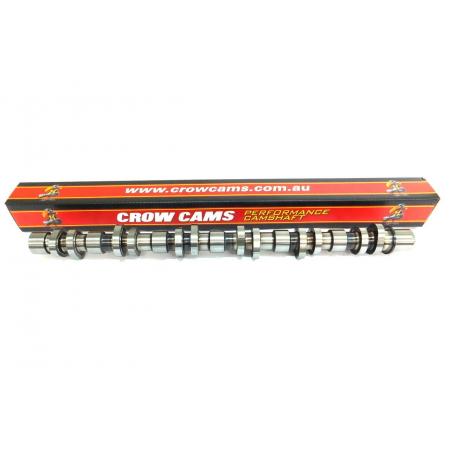AU Hybrid Intech vs EL Falcon SOHC Differences and Camshaft Fitment
How do you tell if you have an EL Falcon with a Hybrid AU engine? Know what that means? In this knowledge base article, we explain how to identify a Hybrid head and also which parts work with which engines.
Late EL Falcons were released with a Hybrid AU engine, which along with a revised block, had a cylinder head with revised porting, different valve sizes and a different rocker ratio & valve stem diameter. You can run an EA-EL camshaft on a Hybrid EL or AU head or vice versa, but only if you run the rocker gear assembly that matches the model of camshaft you are using. Valve spring retainers and valve locks must be the correct for the valve stem in the cylinder head. Valve springs themselves are cross-compatible.
How to tell if you have an EL Hybrid head?
Check the casting number on the front left of your cylinder head:
- WR2A is AU casting (7mm valve)
- 96AA / 96DA / 96DT is EL Hybrid AU casting (7mm valve)
- Any casting year before 96 is regular EA-EL, including 91DA / 94DA / 95DA / 95AA / 95DT (8.7mm / 11/32″ valve)
Our range of camshafts is clearly labelled for which model they fit, and also which valve springs you will need to go with each cam. See our range of camshafts to suit the EA-AU Falcon SOHC 4L 6 Cylinder or click here to see camshafts to suit Late Hybrid EL and AU Intech 4L 6 Cylinder. For any questions, contact us.
Other EL Hybrid differences
The EL Hybrid engine had a few other revisions that place it between the E-Series and Intech motors.
- They have an EL head with 7mm stem valves,
- the exhaust valve is still 39mm, not 41mm like the AU,
- they have conical valve springs,
- the rockers are a 1.8:1 ratio (cam lobe base circle is ~52.6mm vs ~48mm on EA-EF),
- the crank is revised with larger main bearings, however it is NOT an AU crank, although it is very similar.
Below is a tech notice that was issued to Ford dealers on its release.
4.0L Engine Revision
As of January 1998, EL Falcon will be fitted with a revised I6 engine. The revision will be completely transparent as far as the Customer is concerned (no change to engine appearance, power output fuel economy, service requirements, etc). It will also be transparent to you as far as basic engine maintenance and diagnostic procedures are concerned.
However, where internal engine repairs are to be performed, it is important that the Technician realises the difference and is aware of the unique engine re-assembly procedures and specifications.
Interchangeability of parts between the old and the new level engines is not possible except where replacement part numbers are unchanged. Do not attempt to fit new level parts to the new engine, or vice versa.
Vehicle Identification
There will be a period during January 1998 when both the old and the new level engines will be used at the Assembly plant. Thus the vehicle build date may not necessarily identify the level of engine fitted to the vehicle.T.I. Performance Note: The first two digits are the year of part design, as with all Ford parts of the era. 95 and older heads are EA-EL. 96 and newer heads are EL Hybrid/AU.
Old level engines can be identified by a 95DA of 95DT casting on the cylinder head and a 96DA casting on the engine block.
New level engines can be identified by a 96DA or 96DT casting on the cylinder head and a VR2A casting on the engine block.
Note: Approximately 1,600 of these new engines will have the old level head and valve train fitted. The same identification method may be used to individually identify new/old level heads.
Generally speaking, the engine disassembly/assembly procedures are unchanged. The main difference is the size and shape of various internal components. It is important that only new level components are used as replacement parts as in many cases the old level parts will not fit or will lead to the failure of other components.
With respect to major engine repairs, the main points that you will need to keep in mind are:
-revised hardware tightening torque specifications (some components are now ‘torque to yield’).
-revised bolt tightening sequences.
-revised camshaft-to-crankshaft timing procedure.Lash Adjuster Removal
The procedure for lash adjuster removal is unchanged. However the retaining ring has been deleted so that the piston may separate from the main body during removal if care is not taken. It is still recommended that the lash adjuster not be dismantled.Parts Information
The following list identifies the upgraded parts used in the Falcon I6 engine-Engine Block (identified by VR2A casting instead of 96DA)
-Crankshaft
-Crankshaft Sprocket
-Idler Sprocket
-Idler Sprocket Bolt (black finish)
-Timing Chain
-Crankshaft Main Bearing Caps
-Main Bearings
-Con Rod Nuts & Bolts (WR2A stamped on bolt) – torque to yield
-Flywheel Bolts (auto trans only)
-Cylinder Head (identified by 96DA or 96DT casting insted of 94DA or 95DT)
-Camshaft
-Camshaft Sprocket
-Camshaft Sprocket Bolt (black finish)
-Inlet and Exhaust Valves, Guides, Springs and Stem Seals
-Rocker Arms and Washers
-Rocker Shafts and SupportsTorque To Yield. Components MUST be discarded and replaced if removed or loosened.
Specifications
-Con Rod Nuts : 25Nm, then rotate an additional 90 degrees.
-Camshaft & Idler Sprocket Bolts : 20Nm, then rotate an additional 40 degrees.
Image courtesy of Fordmods.











Leave a Reply
Want to join the discussion?Feel free to contribute!